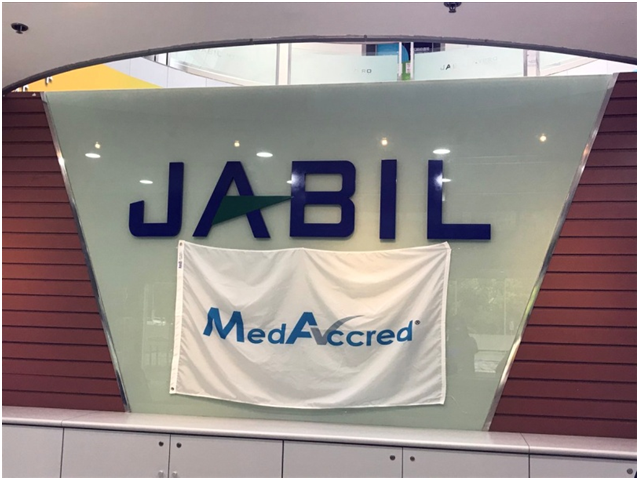
Charles R. Goulding and Preeti Sulibhavi consider future impacts of MedAccred certification as all eyes turn to medical manufacturing.
Ever since the novel coronavirus has ravaged global health and economic outcomes, industry leaders have been pushing the boundaries of innovation. Whether it’s working towards achieving an FDA-approved COVID-19 vaccine or creating a safe and clean environment to reduce the spread of the virus, many companies, researchers and regulatory agencies have never been faced with so much demand for safe and effective medical devices in such little time, in recent history.
On February 12, 2020, MedAccred Director Connie Conboy shared the expansion of the program in a presentation entitled “Exploring the Connection Between Your Manufacturing Process and Patient Safety.” While manufacturers may be preparing to produce to scale, there needs to be quality oversight. MedAccred allows manufacturers to subscribe to its program and admits suppliers such as Jabil Healthcare, formerly Nypro, which is one of the leading medical device companies participating in the MedAccred program. MedAccred is a Performance Review Institute (PRI) initiative supported by the National Institute of Standards and Technology (NIST) and the Manufacturing Extension Program (MEP) National Network.
Ever since it was established, MedAccred has been expanding its support for the medical device industry. Described as an “industry-managed supply chain oversight program for critical manufacturing processes,” MedAccred has now added new sterile device packaging and plastics mechanical assembly audit processes to its repertoire of certifiable manufactured products.
In the past, we have written about integrating MedAccred’s supply chain standard with 3D printing.
We have also covered how MedAccred has been certifying micro medical components. The possibility of MedAccred certifying 3D printing next, after its certification for a plastic injection molding company, was also discussed. MedAccred audits are more detailed than ISO audits. We work closely with our New Jersey Manufacturing Extension Partnership (NJMEP) contact, Peter Russo, on various developments to the MedAccred Program.

Companies engaged in 3D printing activities and developments are eligible for federal and some state tax incentives such as the Research & Development Tax Credit.
The Research & Development Tax Credit
Whether it’s used for creating and testing prototypes or for final production, 3D printing is a great indicator that R&D Credit eligible activities are taking place. Companies implementing this technology at any point should consider taking advantage of R&D Tax Credits.
Enacted in 1981, the now permanent Federal Research and Development (R&D) Tax Credit allows a credit that typically ranges from 4%-7% of eligible spending for new and improved products and processes. Qualified research must meet the following four criteria:
- Must be technological in nature
- Must be a component of the taxpayer’s business
- Must represent R&D in the experimental sense and generally includes all such costs related to the development or improvement of a product or process
- Must eliminate uncertainty through a process of experimentation that considers one or more alternatives
Eligible costs include US employee wages, cost of supplies consumed in the R&D process, cost of pre-production testing, US contract research expenses, and certain costs associated with developing a patent.
On December 18, 2015, President Obama signed the PATH Act, making the R&D Tax Credit permanent. Since 2016, the R&D credit has been used to offset Alternative Minimum Tax (AMT) for companies with revenue below $50MM and, startup businesses can obtain up to $250,000 per year in payroll tax cash rebates.
New Subscribers & Suppliers
Adding four new subscribers within the last year alone, MedAccred now has a total of ten (10) suppliers with many more accredited suppliers added to their running list.
| MedAccred Subscribers | MedAccred Suppliers |
| Philips | Bodycote |
| Johnson & Johnson | Kaysun Corp |
| Stryker | BMP Medical |
| Baxter | Flex |
| Boston Scientific | Elytone Electronic |
| Medtronic | Benchmark Electronics |
| Bausch Health | Hoffer Plastics |
| BD | PTI Engineered Plastics |
| Bayer | Sterigenics |
| Roche Diagnostics | And more… |
Conclusion
It is not difficult to see that the correlation between MedAccred certification and 3D printing is now more direct than ever. With medical biotechnology identified as the future of the manufacturing industry, it would behoove 3D printing to see the relationship expand and help to improve health outcomes for more people.
